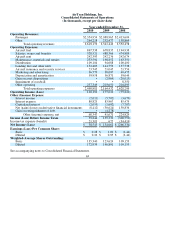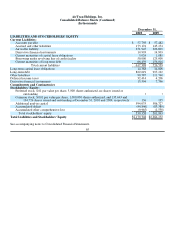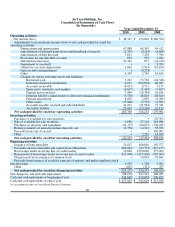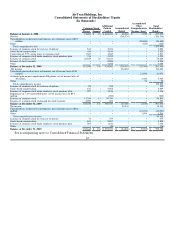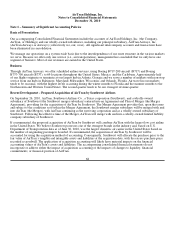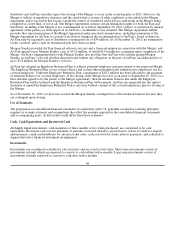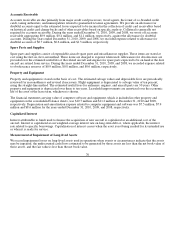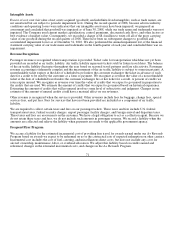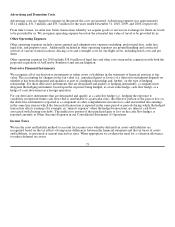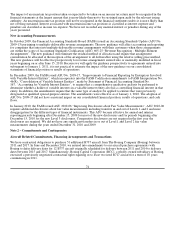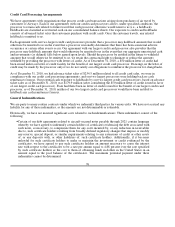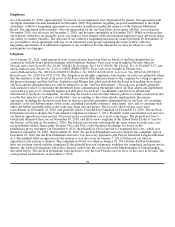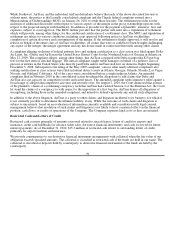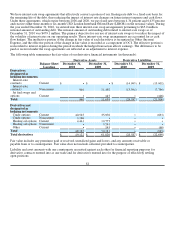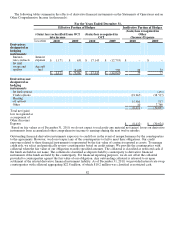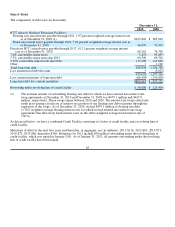Airtran 2010 Annual Report Download - page 81
Download and view the complete annual report
Please find page 81 of the 2010 Airtran annual report below. You can navigate through the pages in the report by either clicking on the pages listed below, or by using the keyword search tool below to find specific information within the annual report.
Advertising and Promotion Costs
Advertising costs are charged to expense in the period the costs are incurred. Advertising expense was approximately
$31.1 million, $31.3 million, and $35.7 million for the years ended December 31, 2010, 2009, and 2008, respectively.
From time to time, we enter into barter transactions whereby we acquire goods or services in exchange for future air travel
to be provided by us. We recognize operating expense based on the estimated fair value of travel to be provided by us.
Other Operating Expenses
Other operating expenses include various general and administrative expenses including, professional fees, audit fees,
legal fees, and property taxes. Additionally included in other operating expenses are ground handling and contracted
services at various station locations, deicing costs and overnight costs for our flight crews, including hotel costs and per
diem.
Other operating expenses for 2010 include $18.6 million of legal fees and other costs incurred in connection with both the
proposed acquisition of AirTran by Southwest and certain litigation.
Derivative Financial Instruments
We recognize all of our derivative instruments as either assets or liabilities in the statement of financial position at fair
value. The accounting for changes in the fair value (i.e., unrealized gains or losses) of a derivative instrument depends on
whether it has been designated and qualifies as part of a hedging relationship and, further, on the type of hedging
relationship. For those derivative instruments that are designated and qualify as hedging instruments, a company must
designate the hedging instrument, based upon the exposure being hedged, as a fair-value hedge, cash flow hedge, or a
hedge of a net investment in a foreign operation.
For our derivative instruments that are designated and qualify as a cash flow hedge (i.e., hedging the exposure to
variability in expected future cash flows that is attributable to a particular risk), the effective portion of the gain or loss on
the derivative instrument is reported as a component of other comprehensive income (loss) and reclassified into earnings
in the same line item in which the forecasted transaction is reported in the same period or periods during which the hedged
transaction affects earnings (for example, in “interest expense” when the hedged transactions are interest cash flows
associated with floating-rate debt). The ineffective portion of the unrealized gain or loss on the cash flow hedges is
reported currently as Other (Income) Expense in our Consolidated Statements of Operations.
Income Taxes
We use the asset and liability method to account for income taxes whereby deferred tax assets and liabilities are
recognized based on the tax effects of temporary differences between the financial statement and the tax bases of assets
and liabilities, as measured at current enacted tax rates. When appropriate we evaluate the need for a valuation allowance
to reduce deferred tax assets.
73


